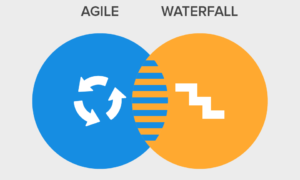Most important first: & is a bit-wise operator while “and” is a logical connector.
Property of these two
First I need to cite a piece from the instructor given link:
(year%4==0 & 92) will be evaluated.
year%4==0 = 0
(0 & 92) ==> 0000000 & 1011100 ==> 1011100 ==>92, which is a True value because it is non zero value.
Hence the result will be True.
There are some mistake made by the author (reason has discussed in followup discussions) and a correct version would be like:
year = 1992
Evaluate (year%4==0 & 92).
Since the & has higher precedence we have (year%4 == (0 & 92))
(0 & 92) ==> 0000000 & 1011100 ==> 0000000 ==>0, which is a False value because it is zero.
Then (year%4 == 0) gives us true.
We can see that & is a bitwise operator, strictly follow the bit string, carry “and” operation on each pair of them. Then give a result bit string.
Then what about “and”? “and” is a lazy guy (just like and in Haskell) when it encountered a false result, it will stop and give an give back that value. What does this mean? Wait, let me explain. A more mathematical notation of “and” is a logic connector we know that if there is a thing is false, the whole statement connected with “and” is false. So, “and” simply give the first false statement it encountered and say “here you are, this is the answer”. So does all statement is true, it will give the last true statement.
still use examples from the link above:
1 | a, b = 9, 10 |
They will give 8 and 10 respectively. 8 is because of bit-wise calculation. “and” processed to the last value and simply gives 10 as result, since a and b are both none zero values which means true.
Then let’s talk about list operation.
& is sadly not support some kind of bit-wise calculation of a list. As the instructor said we can use some func in library Pandas instead of trying &.
Then “and”. I guess a list defaults to be the true value, so no matter how many lists connect with “and” and no matter what the value those lists include, the output would be the last list. Like the example below, it always gives us List4 (ridiculously correct answer).
1 | list1 and list2 and list3 and list4 |
There may be someplace we can use this property, but if we only care about the answer, I guess we have to try func in library Pandas.
ps: the second part has not been tested and what are those func or how to use Pandas are still unrevealed. If you find any mistake or want to add more points, feel free to edit, it will be great.
博主简介:
座右铭:一切都是最好的安排。2020吃冰激凌。
爱丁堡大学 AI 专业,一个点数都加在智商上的究极理工男,理科竞赛选手。但是热爱读书和写作,虽然写得不好但还会一直写。喜爱电音的渣渣音乐家,有点热心过头的朋友。
所有文章都在个人博客上:discover304.github.io
CSDN:discover304
公众号:白泽百泽(注:内容和博客是一样的)












